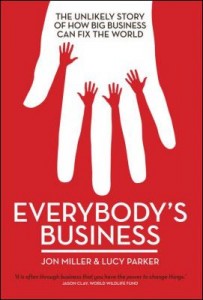Access blog, tools and full site here

We provide direct empirical evidence in support of instrumental stakeholder theory’s argument that increasing stakeholder support enhances the financial valuation of a firm, holding constant the objective valuation of the physical assets under its control. We undertake this analysis using panel data on 26 gold mines owned by 19 publicly traded firms over the period 1993–2008. We code over 50,000 stakeholder events from media reports to develop an index of the degree of stakeholder conflict/cooperation for these mines. By incorporating this index in a market capitalization analysis, we reduce the discount placed by financial markets on the net present value of the physical assets controlled by these firms from 72 percent to between 37 and 13 percent.
Access paper here
See the press coverage at Wharton@Work, Brunswick Review, Investor Relations Web Report, K@W , TriplePundit, and the PennGazette
Access report here
INTEGRATING SOCIAL AND POLITICAL
RISK INTO MANAGEMENT
DECISION-MAKING
Download report here
Companies are spending millions of dollars in local communities to support sustainability – environmental, social and governance (ESG) – programs that develop infrastructure, provide vocational training, transfer skills, support a variety of local institutions and stakeholder groups and much, much more. Measuring the real and perceived benefits to communities of sustainability programs is important for assuring positive outcomes. Thankfully, there are many proven tools and practices for measuring the impact of sustainability programs. But this is only half the story.
In addition to creating benefits for the local communities, sustainability investments also create significant business value for companies. Intuitively, companies understand that there is a business case for being a good corporate citizen. Positive relationships with communities, civil society and governments help ensure that, among other things, production schedules are met, access to labor, land and resources are maintained, and reputations are kept intact.

The Financial Valuation Tool calculates a probable range for the net present value (NPV) back to the company from a portfolio of sustainability investments, including value protected through risks mitigated and value created through productivity gains. The FV Tool, which is used to plan, prioritize, measure and scale a company’s site-level sustainability investments, is designed to supplement a company’s traditional discounted cash flow valuation model. The tool can compare two different sustainability investment scenarios, based on risks and opportunities faced by an operation/asset, such as a mine or pipeline, to help managers decide which scenario is likely to yield the most value for the company by creating positive impact for surroundings communities.
See case studies here, articles here, quality assessment tool (personal) here






